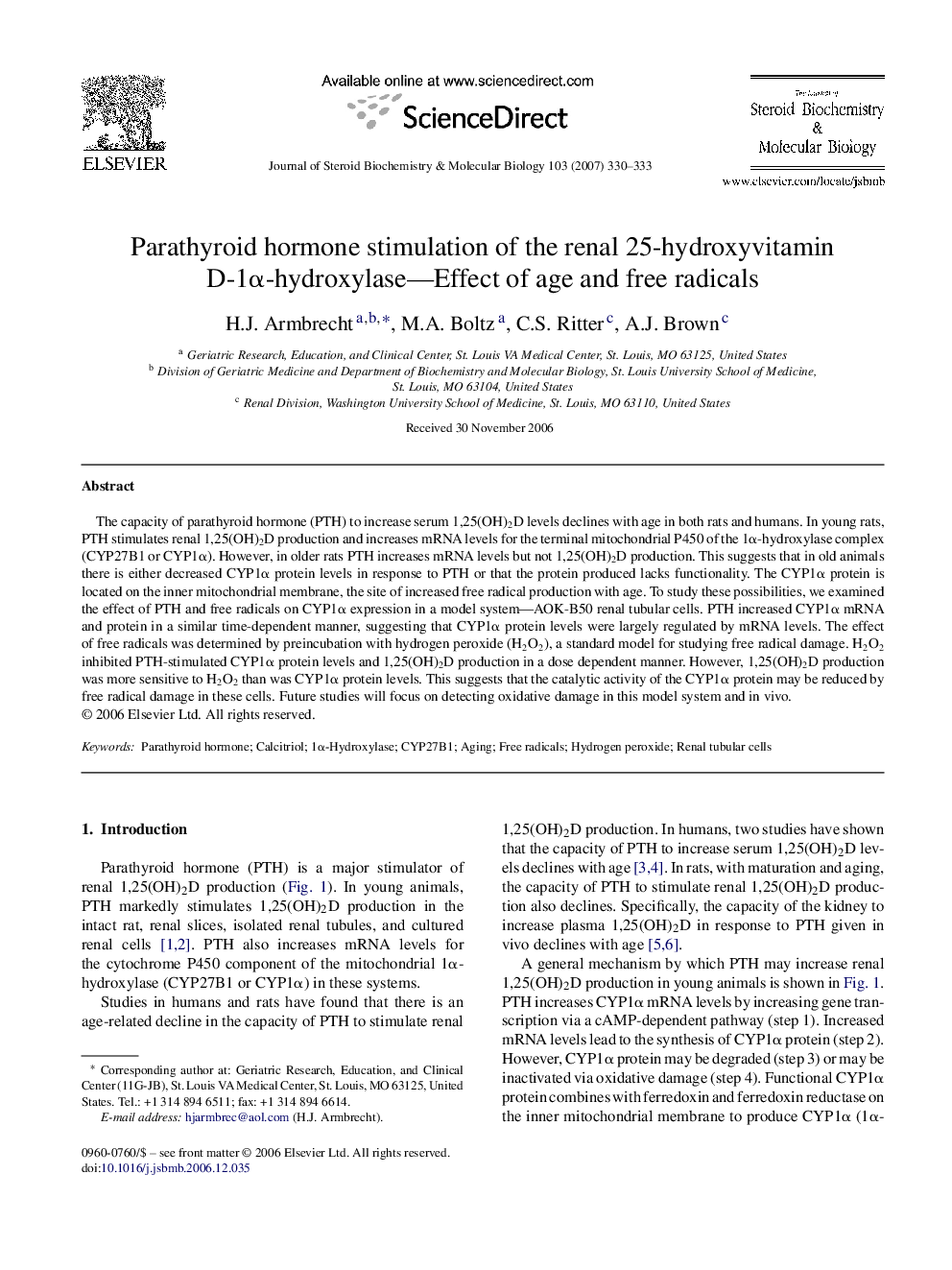| Article ID | Journal | Published Year | Pages | File Type |
|---|---|---|---|---|
| 1992538 | The Journal of Steroid Biochemistry and Molecular Biology | 2007 | 4 Pages |
The capacity of parathyroid hormone (PTH) to increase serum 1,25(OH)2D levels declines with age in both rats and humans. In young rats, PTH stimulates renal 1,25(OH)2D production and increases mRNA levels for the terminal mitochondrial P450 of the 1α-hydroxylase complex (CYP27B1 or CYP1α). However, in older rats PTH increases mRNA levels but not 1,25(OH)2D production. This suggests that in old animals there is either decreased CYP1α protein levels in response to PTH or that the protein produced lacks functionality. The CYP1α protein is located on the inner mitochondrial membrane, the site of increased free radical production with age. To study these possibilities, we examined the effect of PTH and free radicals on CYP1α expression in a model system—AOK-B50 renal tubular cells. PTH increased CYP1α mRNA and protein in a similar time-dependent manner, suggesting that CYP1α protein levels were largely regulated by mRNA levels. The effect of free radicals was determined by preincubation with hydrogen peroxide (H2O2), a standard model for studying free radical damage. H2O2 inhibited PTH-stimulated CYP1α protein levels and 1,25(OH)2D production in a dose dependent manner. However, 1,25(OH)2D production was more sensitive to H2O2 than was CYP1α protein levels. This suggests that the catalytic activity of the CYP1α protein may be reduced by free radical damage in these cells. Future studies will focus on detecting oxidative damage in this model system and in vivo.
